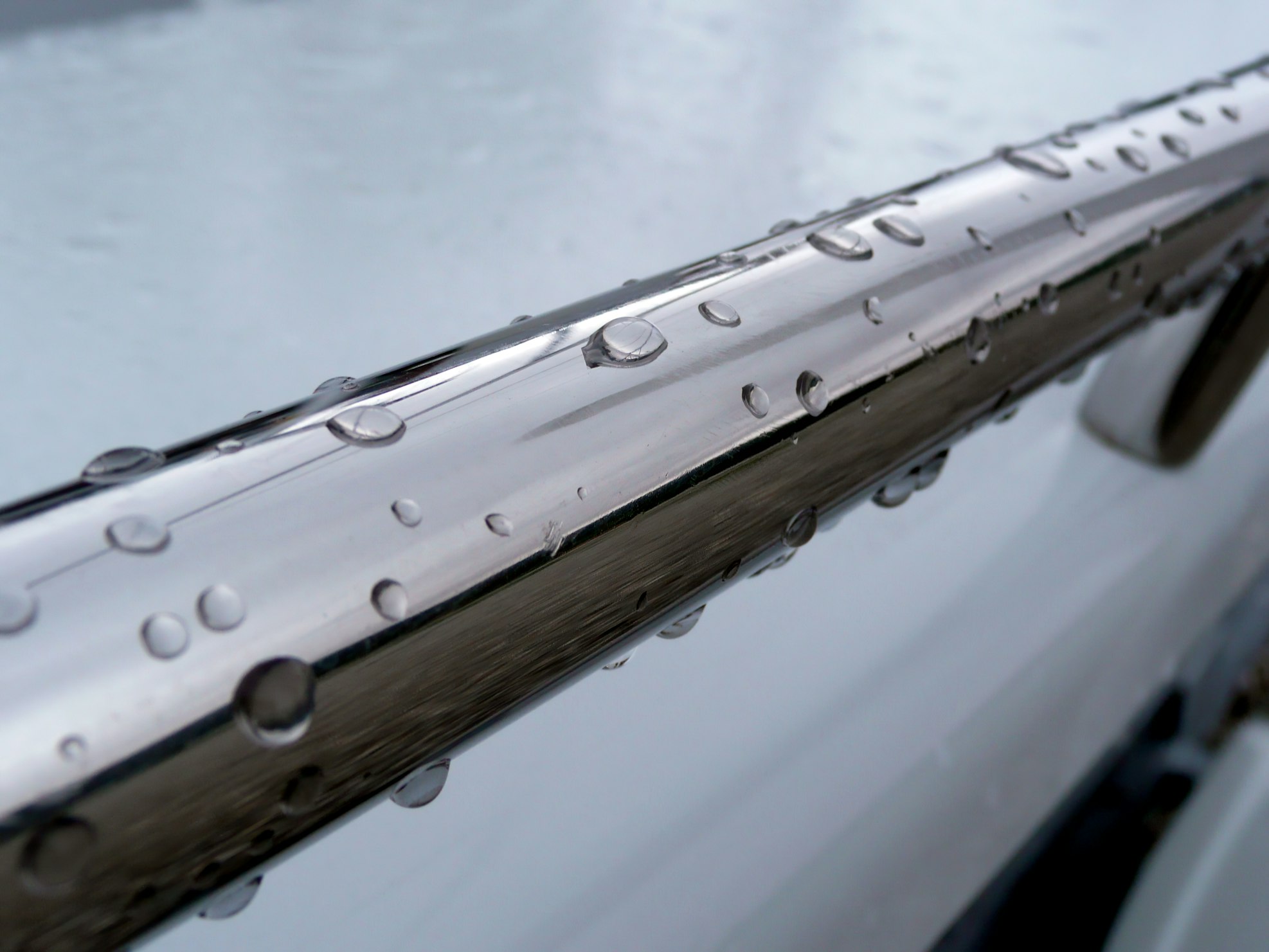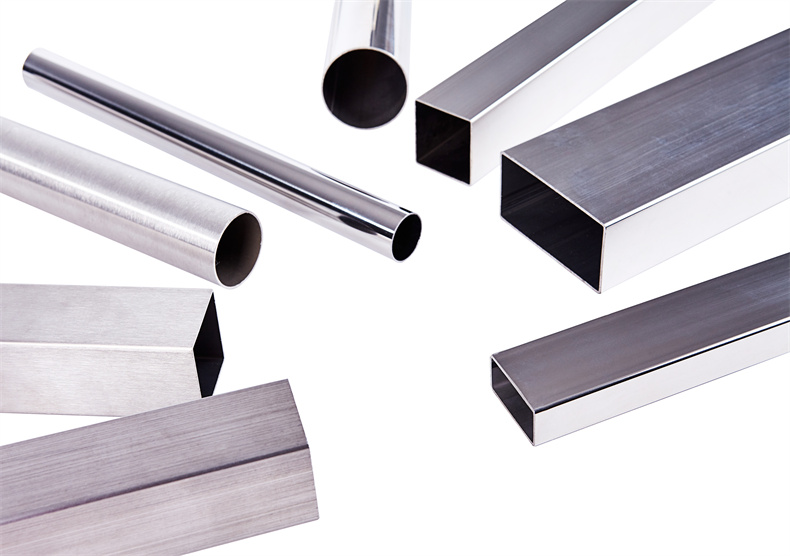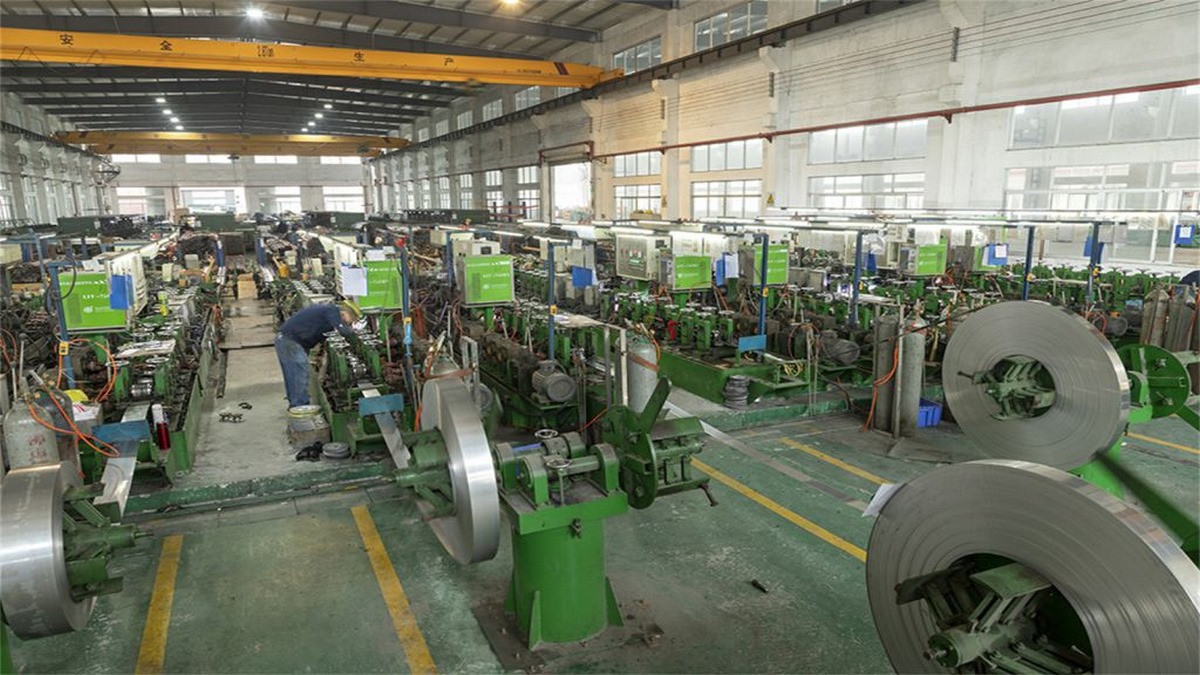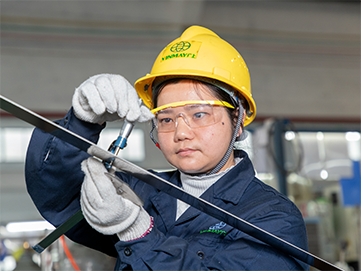Stainless steel is a staple in many industrial operations and manufacturing processes. It is known for its robustness and durability, and is used in a variety of products.
To truly understand the power of stainless steel, it is necessary to explore what lies inside the world of stainless steel tube factories. From the manufacturing process to customization options, this article will explore the inner workings of stainless steel tube factories and the amazing products they produce.
Key Takeaways:
Stainless steel is an incredibly useful material for tube manufacturing, offering a range of advantages that make it an attractive option for many applications.
Common grades of stainless steel used in tube production include 304, 316, and 409, each of which offers unique properties and benefits.
In this section, we will discuss the advantages of using stainless steel in tube manufacturing and explore some of the most common stainless steel grades used in tube production.
By understanding the advantages of using stainless steel in tube manufacturing, businesses can make more informed decisions about their production processes.
Stainless steel is an incredibly durable material, making it ideal for tube manufacturing. It can withstand corrosion and most acids, making it a great choice for any application requiring a tube that can handle extreme conditions.
It has a high melting point, which ensures that it won't deform or warp easily under high temperatures. Additionally, stainless steel is an excellent conductor of heat and electricity, making it a great option for applications that require the efficient transfer of both.
When it comes to stainless steel tubes, there are a variety of grades to choose from for any application. The most common grades are the 304, 316, and 409 series. Grade 304 is a standard stainless steel alloy with an '18/8' composition; it is the most versatile and most widely used stainless steel, available in a wider range of products, forms, and finishes than any other. Grade 316 is the second most common stainless steel and is usually used in more corrosive environments, such as coastal areas or food processing plants. Grade 409 is the most economical choice, making it a popular option for low-cost applications such as mufflers and tailpipes.
Grade | Composition | Common Uses |
304 | 18/8 | Food processing, general applications |
316 | 17% chromium, 8-10% nickel | Coastal areas, food processing plants |
409 | 10.5-11.75% chromium | Mufflers, tailpipes |
Recommended:

Although tubing and piping are often seen as interchangeable terms, their differences can have a major impact on the production of stainless steel tubes.
Tubing is generally smaller in diameter than piping, and is typically used to refer to a hollow cylinder or a tube-like structure. Piping, on the other hand, refers to a larger diameter pipe with a solid wall, often used for carrying liquids or gas.
When it comes to producing stainless steel tubes, the distinction between tubing and piping can be crucial. While tubing is generally used for lighter-duty applications such as handrails and furniture, piping is often used for heavier-duty applications such as automotive and industrial parts. Therefore, it is important for tube factories to be able to identify the difference between the two in order to ensure the quality of the steel tubes they produce.
The process of creating stainless steel tubes is a complex one, and it is important for tube factories to understand the difference between tubing and piping. The machinery used to produce tubing is typically smaller and less expensive than the machinery used for piping, so it is important for tube factories to determine which type of steel tube they are going to create before investing in additional machinery.
In addition, stainless steel tubing is often used in the food and beverage industry, as well as for medical applications. This requires the use of specific tubing sizes and specifications, and tube factories need to be sure that they are producing tubes that meet the necessary standards.
Understanding the differences between tubing and piping is an important part of the production process for stainless steel tubes. By being able to identify and produce the correct type of steel tube, tube factories can ensure the quality of their products and keep customers satisfied.

Stainless steel tubes come in various forms and types, each designed to meet specific industrial and commercial needs. Understanding the different types of stainless steel tubes is crucial for selecting the right one for your project or application. Here are some of the most common types:
Seamless Stainless Steel Tubes
Seamless stainless steel tubes are crafted without welding seams, making them ideal for applications where structural integrity and resistance to high pressures are critical. The absence of welds eliminates the risk of weak points, making seamless tubes suitable for industries like oil and gas, aerospace, and chemical processing.
Welded Stainless Steel Tubes
Welded stainless steel tubes are manufactured by welding stainless steel strips or plates together. While they may have visible seams, welded tubes offer cost-effective solutions for various applications, including structural components, automotive exhaust systems, and decorative purposes.
Round Tubes
Round stainless steel tubes are the most common and versatile type. They are used in a wide range of industries, including construction, automotive, and manufacturing. Round tubes come in both seamless and welded variations. For more information on the advantages and applications of welded round tubes, check out our detailed blog post on stainless steel welded round tubes.
Square and Rectangular Tubes
Square and rectangular stainless steel tubes find application in architectural design, construction, and furniture manufacturing. They provide clean lines and a modern aesthetic, making them popular choices for structural and decorative purposes.
Refer to our ultimate guides on stainless steel square tubing and rectangular stainless steel tubes.
Oval Tubes
Oval stainless steel tubes offer a unique and elegant appearance. They are often used in decorative applications, such as handrails and furniture components, where aesthetics are important.
Capillary Tubes
Capillary stainless steel tubes are extremely thin and have a small diameter, making them suitable for specialized applications like medical instruments and high-precision fluid transport systems. If you're interested in purchasing light gauge stainless steel water tubes, you can contact us, as we specialize in manufacturing these products.
Coiled Tubes
Coiled stainless steel tubes are designed for applications where flexibility is required, such as heat exchangers and certain types of refrigeration systems. Their compact design saves space and allows for efficient heat transfer.
Instrumentation Tubes
Instrumentation stainless steel tubes are precision-engineered for use in analytical and measuring instruments, as well as in laboratories and process control systems. They offer high corrosion resistance and precision dimensions.
Heat Exchanger Tubes
Heat exchanger stainless steel tubes are designed for transferring heat between two fluids without mixing them. These tubes are widely used in HVAC systems, chemical processing, and power generation. For detailed information on selecting and using heat exchanger tubes, visit our blog post on stainless steel tube for heat exchangers.
Boiler Tubes
Boiler stainless steel tubes are engineered to withstand high temperatures and pressures in boiler systems. They are essential components in the power generation and industrial heating sectors.
Hydraulic Tubes
These tubes are specifically designed for hydraulic systems and fluid conveyance applications, offering high-pressure resistance and corrosion protection.
Sanitary Tubes
Stainless steel sanitary tubes are used in industries such as food and beverage, pharmaceuticals, and biotechnology, where hygiene and cleanliness are critical. For more insights into the applications and benefits of sanitary stainless steel tubes, check out our dedicated blog post on sanitary tubes.
Selecting the right type of stainless steel tube depends on factors such as the intended application, environmental conditions, and desired performance characteristics. Understanding these distinctions will help you make informed choices for your specific project or industry.
Recommended: Stainless Steel Welded Square Pipes Vs. Round Pipe
Frequently, stainless steel tubes must be selected according to their intended purpose and application. Popular types of stainless steel tubes include:
1. Seamless tubes: Made from single sheets of metal, seamless tubes are the most commonly used type of stainless steel tube due to their strength and durability.
2. ERW (Electric Resistance Welded) tubes: Made from two sheets of metal welded together, ERW tubes are less expensive than seamless tubes and can be used for a variety of applications.
3. LSAW (Longitudinal Submerged Arc Welded) tubes: LSAW tubes are made by welding two sheets of metal together along a long seam. They are known for their strength and durability, making them ideal for more demanding applications.
Each type of stainless steel tube has different characteristics which affect its suitability for different applications. Make your choice based on your project's specific needs.

Stainless steel tube manufacturing involves a complex process. This process includes selecting the best raw materials, a multi-stage production process, and rigorous quality control measures. The goal is to ensure the highest level of excellence in the final product.
The process of manufacturing stainless steel tubes is intricate and highly specialized. It requires expert knowledge and skill to produce tubes that meet the required specifications and standards.
When considering stainless steel tubes, it's essential to explore the differences between seamless and welded options and understand their creation processes.
Seamless stainless steel tubes are crafted from a single piece of stainless steel through a meticulous process. It begins with drilling a hole into a solid tube, which is then expanded using a mandrel to achieve the desired diameter and wall thickness. The result is a seamless tube with no visible welds. Seamless tubes are known for their superior strength, corrosion resistance, and overall performance. While they tend to be more expensive due to additional processing steps, they are ideal for critical applications.
In contrast, welded stainless steel tubes are formed by rolling a sheet of stainless steel into a tube and welding it along the seam. This welding process is carefully executed to ensure strength and durability. Welded tubes are often chosen for applications where strength and durability are required, such as automotive exhaust systems. They are typically more cost-effective and suitable for various applications, particularly in smaller diameter scenarios.
The selection between seamless and welded tubes depends on factors such as cost, performance requirements, and desired durability. Manufacturers offer various types of stainless steel tubes, each with its unique properties. Additionally, tubes can be cold-drawn or hot-formed, influencing their dimensions, precision, and ability to withstand temperature variations. For a detailed comparison between seamless and welded stainless steel tubes, check out our blog post on stainless steel tube welded vs. seamless.
Stainless steel tubes, in their various forms, provide reliable and cost-effective solutions across numerous industries.
Stainless steel tube production is a complex process that involves two distinct methods - seamless and welded. Each process has its own unique characteristics and has been honed and perfected by manufacturers to produce high quality steel tubes for a wide range of applications.
In this section, we will explore the production process in detail.
Seamless stainless steel tubes are renowned for their remarkable strength and resistance to corrosion. These tubes are created without any welding or seams. The process begins with a solid cylindrical billet, which is pierced to form a hollow tube. Subsequently, the tube is elongated and shaped using a series of hot and cold working processes. This meticulous manufacturing process ensures their exceptional quality and durability, making them a top choice for various applications.
Welded stainless steel tubes are produced by joining stainless steel sheets or coils through various welding methods. Here's a detailed look at the production process, which includes different welding techniques:
Raw Material Selection High-quality stainless steel sheets or coils are carefully chosen for tube production. The raw materials for stainless steel tube production are usually selected from nickel and chromium alloys, carbon steel, and Stainless steel.
Tube Formation The selected stainless steel material is shaped into a tube by passing it through a series of rollers to create the desired shape. The edges of the strip are then joined together to form a continuous seam along the length of the tube.
Welding Techniques
1. Electric Resistance Welding (ERW): In this method, an electric current passes through the edges of the strip, generating heat that fuses the edges together. ERW is widely used for its efficiency and versatility.
2. Submerged Arc Welding (SAW): SAW involves creating an arc between the welding electrode and the base material while the weld is submerged beneath a layer of granular flux. This method is known for its high-quality welds in thick-walled tubes.
3. High-Frequency Induction Welding (HFIW): HFIW uses high-frequency induction heating to create a weld at the seam. It's often employed for pipes with smaller diameters.
4. Laser Welding: Laser welding utilizes a focused laser beam to melt the edges of the stainless steel strip, creating a precise and strong weld. This method is suitable for specialized applications.
Heat Treatment and Annealing The welded tube undergoes heat treatment and annealing to relieve stress, enhance corrosion resistance, and improve mechanical properties.
Surface Finishing After welding and heat treatment, the tube's surface is treated to achieve the desired finish, which can include processes like polishing or passivation.
Process | Description |
Cutting | Cut to desired length |
Bending | Shape to desired form |
Welding | Join components |
Heat Treating | Harden surface |
Inspection/Cleaning | Quality assurance |
Packaging | Ready for delivery |

Premium stainless steel tube factories offer a wide range of customization options to meet the needs of their customers. These options range from tube dimensions and shapes to material selection and grades, to surface finishes and coatings, and even include additional features and modifications.
Whether a customer needs a specialized product or a mass-produced item, stainless steel tube factories can provide the perfect solution.
From round tubes to square tubes, premium stainless steel tube factories offer a wide range of customization options in terms of dimensions and shapes. Whether you are constructing industrial machinery or designing a home project, you can find the perfect stainless steel tube for your needs.
Here are some of the customization options you can find:
No matter the size, shape, or type of stainless steel tubing you need, you can find it at a premium stainless steel tube factory. With the right customization options, you can create the perfect tubes for any project.
With a wide range of grades and materials to choose from, premium stainless steel tube factories offer a variety of customization options for all types of projects. Steel tubes can be crafted from both ferrous and non-ferrous metals, including carbon steel, stainless steel, aluminum, copper, brass, and titanium, each with varying properties.
Material | Properties |
Carbon Steel | Durable, low cost |
Stainless Steel | High corrosion resistance |
Aluminum | Lightweight, corrosion resistant |
Copper | Easily formed, malleable |
Brass | Low friction, corrosion resistant |
Titanium | Strong, corrosion resistant |
Depending on the application, the factory will recommend the most suitable grade and material for the job. Additionally, custom finishes can be applied to the stainless steel tubes, from the standard mill finish to brushed, satin, electro-polished, and more.
Drawing on their expertise, premium stainless steel tube factories offer a range of customizations when it comes to surface finishes and coatings. These include:
The various coatings and finishes available offer a number of benefits. Polishing can improve the aesthetic appeal and create a smooth finish. Anodizing and powder coating can add color and texture. Protective coatings can help protect against corrosion, while heat-treated coatings can increase the longevity of the tube.
The right combination of finishes and coatings can create the perfect product for any application.
Related Article: Comparisons of hairline finish, brushed finish and satin finish stainless steel tube
Taking customization to the next level, premium stainless steel tube factories offer a range of additional features and modifications. These include variable lengths, diameters, and wall thicknesses to meet exact specifications, as well as a variety of customization options such as bending, cutting, and welding.
In addition, they can provide special finishes such as mirror polishing, sandblasting, and anodizing. From simple decorative elements to complex engineering components, these factories can make tubes of any size and shape to meet the exact needs of customers.
Furthermore, they can guarantee top-quality materials and craftsmanship, as well as fast turnaround times.
In short, premium stainless steel tube factories are the go-to source for reliable and cost-effective customized tube solutions.

Stainless steel tubes are widely used in a variety of industries due to their durability, strength and corrosion resistance.
From the automotive industry to construction and architecture, food processing to oil and gas, these tubes are an integral part of many production lines.
In this article, we will explore the various applications of stainless steel tubes and how they have become essential in the modern world.
Exploring the automotive industry, stainless steel tubes have become an increasingly important resource in the manufacturing of automobiles. From air-conditioning systems to fuel lines, these tubes are versatile and offer many benefits to carmakers.
Some of the advantages of stainless steel tubes for the automotive industry include:
From bridges to skyscrapers, stainless steel tubes have proven to be a reliable material for construction and architecture applications. Their strength, durability, and resistance to rust enable them to withstand the test of time. In addition, the aesthetically pleasing finish of stainless steel can enhance the look of a building or structure.
The use of stainless steel tubes in construction and architecture is extensive. They can be used to create structural frames, support columns, and even handrails. In addition, they can be used to create wall cladding, trusses, and even roofing systems.
Stainless steel tubes are also a popular choice for many interior design elements. From staircases to furniture, stainless steel can be used to create a modern, sleek look. And because stainless steel is resistant to corrosion, it can be used to create outdoor features such as decks, balconies, and patios without fear of rusting.
Stainless steel tubes have become an integral part of the construction industry. With their strength, durability, and aesthetic appeal, it's easy to see why they are a popular choice for architects and engineers.
What role do stainless steel tubes play in food processing? They are essential components in the production, transfer, and storage of food products. From sanitary tubing used in dairy and beverage production to heat exchangers used in cooking, stainless steel tubes serve a variety of roles in the food processing industry:
Manufacturing stainless steel tubes for oil and gas applications requires both precision and expertise. From the construction of oil rigs to the transportation of crude oil, stainless steel plays an integral role in the oil and gas industry.
Application | Stainless Steel Type |
Oil Rig Construction | 300 and 400 series stainless steel |
Transportation of Crude Oil | 316, 317, and 321 stainless steel |
Offshore Platforms | 904L stainless steel |
The higher grades of stainless steel are corrosion-resistant and are able to withstand extreme temperatures and pressures, making them ideal for these applications. In addition, stainless steel tubes used in the oil and gas industry often require special coatings to increase their lifespan and protect them from the harsh elements.
As technology advances, so does the need for stainless steel tubes of increasingly higher quality. With the help of the latest manufacturing technologies, factories are able to produce stainless steel tubes that exceed the standards for oil and gas applications.

Quality control is a critical aspect of stainless steel tube manufacturing. Ensuring that the final products meet stringent quality standards is essential to providing reliable and high-performance tubes for various applications. Premium stainless steel tube factories prioritize quality at every stage of the manufacturing process. Here's an overview of the quality control measures employed:
Material Inspection
The quality control process begins with a thorough inspection of the raw materials. Stainless steel billets or coils are scrutinized for their composition, dimensions, and surface condition. Any deviations from the specifications are promptly addressed.
Production Monitoring
Throughout the tube formation process, continuous monitoring is conducted to check for defects, irregularities, or deviations from design parameters. This includes monitoring temperatures, pressures, and dimensions during extrusion, welding, and other critical stages.
Non-Destructive Testing (NDT)
NDT techniques like ultrasonic testing and eddy current testing are employed to inspect the integrity of welds, detect internal defects, and ensure uniform wall thickness. These tests are non-invasive and help identify potential issues without damaging the tubes.
Dimensional Inspection
Precise dimensions are crucial for the functionality of stainless steel tubes. Factories employ precision measuring instruments to verify that the tubes meet the specified diameter, length, and wall thickness.
Surface Finish Evaluation
The surface finish of stainless steel tubes is closely examined to ensure it meets the desired quality standards. Mirror polishing, sandblasting, or other finishes are inspected for uniformity and aesthetics.
Corrosion Resistance Testing
Stainless steel's corrosion resistance is a key factor in its performance. Laboratories conduct corrosion tests to ensure that the tubes will withstand the intended environmental conditions.
Documentation and Traceability
Proper documentation and traceability are maintained throughout the manufacturing process. This includes recording test results, material certifications, and production details for each batch of tubes.
Compliance with Standards
Stainless steel tube factories adhere to industry-specific standards and certifications, such as ASTM, ASME, or EN standards. This compliance ensures that the tubes meet the requirements of diverse applications.
Final Inspection
Before packaging and delivery, a final inspection is carried out to verify that all quality criteria have been met. This includes a comprehensive assessment of dimensions, surface finish, and overall product quality.
Packaging and Protection
To prevent damage during transportation and storage, stainless steel tubes are carefully packaged and protected against environmental factors such as moisture and contamination.
By implementing these rigorous quality control measures, stainless steel tube factories consistently produce tubes that meet or exceed industry standards. This commitment to quality assurance ensures that customers receive reliable and high-quality products for their applications.

The longevity of stainless steel tubes is dependent on proper maintenance and care.
This includes regular cleaning and preservation, as well as measures to prevent corrosion.
In this section, we will discuss various methods of maintaining and caring for stainless steel tubes to ensure their long-term durability.
Proper cleaning and preservation of stainless steel tubes is essential for ensuring their longevity. It is important to regularly inspect the tubes for any surface damage. Use the correct type and concentration of cleaning solution, ensuring all cleaning materials used are non-abrasive to prevent further damage.
Cleaning and preserving stainless steel tubes should be done regularly to maintain their integrity. For regular cleaning, a mild detergent and warm water solution should be used. This will help to remove any dirt, dust, and debris that may have built up on the surface. For thorough cleaning, a more powerful chemical solution should be used and applied using a soft cloth.
After cleaning, the stainless steel tubes should be dried thoroughly to prevent corrosion. A protective coating should also be applied to the tubes to help protect them from the elements. The type of coating used should be suitable for the environment they are located in and should be applied at least once a year.
With the right cleaning and preservation, stainless steel tubes can last for many years.
Regular maintenance and care of stainless steel tubes is essential to prevent corrosion and extend their lifespan. To ensure their longevity, stainless steel tubes should be inspected regularly and any signs of corrosion dealt with swiftly to prevent the spread of damage.
Regular cleaning is also important, as dirt and debris can cause corrosion if they become trapped in the crevasses of the tube. It is also important to use the right cleaning materials, as harsh chemicals can cause damage to the surface of the steel. Additionally, it is important to dry the tubes thoroughly after cleaning to prevent the buildup of moisture, which can cause corrosion.

As a consumer, it is important to understand the essential questions to ask when researching and choosing a stainless steel tube factory. Here are some of the key points to consider when selecting the right tube factory for you:
Doing your due diligence and asking the right questions when selecting a stainless steel tube factory will help you find the best partner for your project. Ask as many questions as necessary to make sure you are making the right decision. Consider the quality of the products, the turnaround time, and the customer service offered by the tube factory before making your selection.
Recommended: Essential Tips for Purchasing Stainless Steel Welded Pipe
With a track record of satisfying more than 400 customers in over 80 countries, Vinmay is your trusted partner for premium stainless steel tube solutions. As a leading stainless steel tube factory, we specializing in stainless steel welded tubes and fittings for over 15 years and delivering customized solutions to meet your exact project requirements. Whether you need tubes for construction, automotive, or any other industry, Vinmay is here to provide top-notch stainless steel tube solutions.
Ready to explore our range of stainless steel tubes or discuss your specific needs? Don't hesitate to get in touch with us. Our expertise, dedication to quality, and global reach make us the ideal choice for your stainless steel tube requirements.
If you're in need of top-quality stainless steel tubes for your projects, reach out to Vinmay.
Wrapping up our comprehensive guide to stainless steel tube factories, we invite you to explore our factory in action through this brief introduction video.
Get a firsthand look at Vinmay's state-of-the-art facilities and our commitment to quality and innovation:
